April 28 - May 4, 2019: Issue 402
WWII Shipwreck Discovered: Australian Freighter SS Iron Crown Found After Being Sunk By Submarine In 1942
SS Iron Crown alongside SS Hagen (Supplied National Library of Australia)
Bathymetric map showing Iron Crown on sea floor (Credit CSIRO)
April 23rd, 2019
by Australian National Maritime Museum | CSIRO
After being lost for 77 years, an Australian freighter sunk by a Japanese submarine during World War II has been located by maritime archaeologists using CSIRO research vessel Investigator.
The SS Iron Crown, a 100m long ore freighter, was sunk by a Japanese submarine on June 4th, 1942 while travelling through Bass Strait with a cargo of manganese ore. The heavily loaded freighter was hit by a torpedo from the submarine and sank within 60 seconds.
Peter Harvey, a maritime archaeologist with Heritage Victoria said it is one of Victoria's worst shipwrecks in terms of loss of life.
"The Iron Crown is historically significant as one of only four World War II shipwrecks in Victorian waters and is the only ship to have been torpedoed by a submarine in Victorian waters," Mr Harvey said.
"There were 43 crew from the Australian Merchant Navy on board the ship and 38 lost their lives in the attack. Locating the wreck after 77 years of not knowing its final resting place will bring closure for relatives and family of those that were lost at sea, as well as for Australia's maritime community."
Iron Crown was located using multibeam sonar equipment and a special drop camera on research vessel Investigator, which returned to its home port of Hobart this morning.
Voyage Chief Scientist, Emily Jateff from the Australian National Maritime Museum, led the search and said the wreck was located about 100km off the Victorian coastline south of the border with New South Wales.
"The wreck of Iron Crown appears to be relatively intact and the ship is sitting upright on the seafloor in about 700m of water," Ms Jateff said.
"We have mapped the site and surrounding seafloor using sonar but have also taken a lot of close up vision of the ship structure using a drop camera. This will allow us to create a composite image of the whole site to assist in follow up surveys for its conservation and management."
Imagery from the camera survey clearly shows the intact bow of the ship, with railings, anchor chains and both anchors still in position, as well as other structures on the deck.
%20(1).png?timestamp=1556089029520)
Drop camera: Bow with anchor chains. ©CSIRO
Ms Jateff said that it was an exciting but solemn moment for all on board when they realised that the wreck had been located.
"This is an important discovery for Australia and all on board feel honoured to have been involved in this successful search," Ms Jateff said.
"The fact that so many lives were lost in the sinking of Iron Crown was something that hit home with all scientists, staff and ship crew working on board Investigator."
Identifying the location of the wreck has also involved many hours of prior survey work from volunteers of the Maritime Archaeology Association of Victoria.
The discovery of Iron Crown is an event of national significance and has been reported to the Victorian and Australian Governments. A memorial service will be planned for the site.
CSIRO research vessel Investigator has discovered a number of historic shipwrecks in recent years, including solving a 74-year mystery in 2017 when it located the wreck of SS Macumba, an Australian merchant ship sunk in World War II during a Japanese air attack in Northern Territory waters.
The latest discovery comes as part of a whole-of-government approach to seafloor mapping and surveying involving various national and state maritime agencies, as well as the Australian Hydrographic Office. This program aims to assist in improving maritime charts for safe navigation in Australian waters and improve knowledge of Australia's maritime history.
All historic shipwrecks (shipwrecks greater than 75 years old) in Australian waters and any relics or artefacts from those wrecks are protected under the Historic Shipwrecks Act 1976.
Chief Scientist, Emily Jateff, Australian National Maritime Museum (Credit Max McGuire-CSIRO)
Background
VICTIMS' STORY
Twelve survivors from an Australian coastal freighter which was torpedoed and sunk without warning by a Japanese submarine off the New South Wales coast, told grim stories of their ordeal when they reached an Australian port last night. They had been picked up by a naval vessel after having spent several hours on two rafts, clad only in pyjamas.
The ship was one of three vessels mentioned in an official communique issued yesterday by Allied Head-quarters as having been attacked by submarines off the coast. The communique said that one of the vessels was sunk and the other two escaped undamaged. (See Page 5.) JAPANESE SUBMARINE VICTIMS' STORY (1942, June 5). The Sydney Morning Herald (NSW : 1842 - 1954), p. 1. Retrieved from http://nla.gov.au/nla.news-article17798747
SANK JAPANESE SUBMARINE
The pilot and crew of the bomber which sank a Japanese submarine off the eastern coast of Australia, being photographed by a war correspondent's newsreel camera on their return to an Allied base. They are from, left: Sergeant D. K. Godfrey, of Perth (wireless air-gunner): Flight-Lieutenant G. Hitchcock (pilot), of Sydney; Flight-Sergeant A. T. Morton (wireless air-gunner), of Adelaide; and Flying-Officer S. Morrison (second pilot), of Melbourne. SANK JAPANESE SUBMARINE (1942, June 10). The Sydney Morning Herald(NSW : 1842 - 1954), p. 9. Retrieved from http://nla.gov.au/nla.news-article17796112
ROUTED JAPANESE SUBMARINE
Flying-Officer W. F. A. Winckel (left), pilot of the Netherlands Indies Air Force Squadron bomber, in the recent successful submarine hunt off the NSW coast. With him is Lieut. J. Ivan Loggem, the man who dropped the bombs on the Japanese submarine. ROUTED JAPANESE SUBMARINE (1942, June 13). The Sun (Sydney, NSW : 1910 - 1954), p. 3 (FOOT BALL LAST RACE). Retrieved from http://nla.gov.au/nla.news-article231794741
Only Fire Shells Explode: One Casualty
Only one casualty-a broken leg-and little damage, none of a military nature, resulted from the shelling from Japanese submarines of Sydney and Newcastle early on Monday .
SYDNEY was attacked at 12.5 a.m., the submarine firing shots for about 15 minutes.
About 15 shells were fired, but only three — thought to be 5.9 calibre — exploded, causing little damage. The others were duds. One of these hit a block of flats and Mr. Edward Hirsch, 40, a refugee, who left Germany five years ago, suffered a broken leg.
NEWCASTLE was shelled at 2 a.m., and the attack lasted 1 5 minutes. Only two of the 12 shells fired exploded, causing little damage apart from broken windows. Three or four crashed in streets near the beach. There were no casualties.
SHOTS were fired at motorists whose car headlights were conspicuous as they went through city streets while the alert was on, following the shelling of Sydney by enemy submarines. A pedestrian, Frank Rogers, 47, was wounded in the left leg and admitted to Sydney Hospital. A member of the Allied forces called on a passing motorist to pull up and to attract the driver's attention fired two shots into the air. It is believed that one of these bullets ricocheted from a building and struck the pedestrian in the leg. Hundreds of lighting breaches were reported in nearly all city and suburban areas. JAP SUBMARINES SHELL SYDNEY AND NEWCASTLE (1942, June 10). Weekly Times (Melbourne, Vic. : 1869 - 1954), p. 3. Retrieved from http://nla.gov.au/nla.news-article225564903
DAMAGED IN SYDNEY RAID
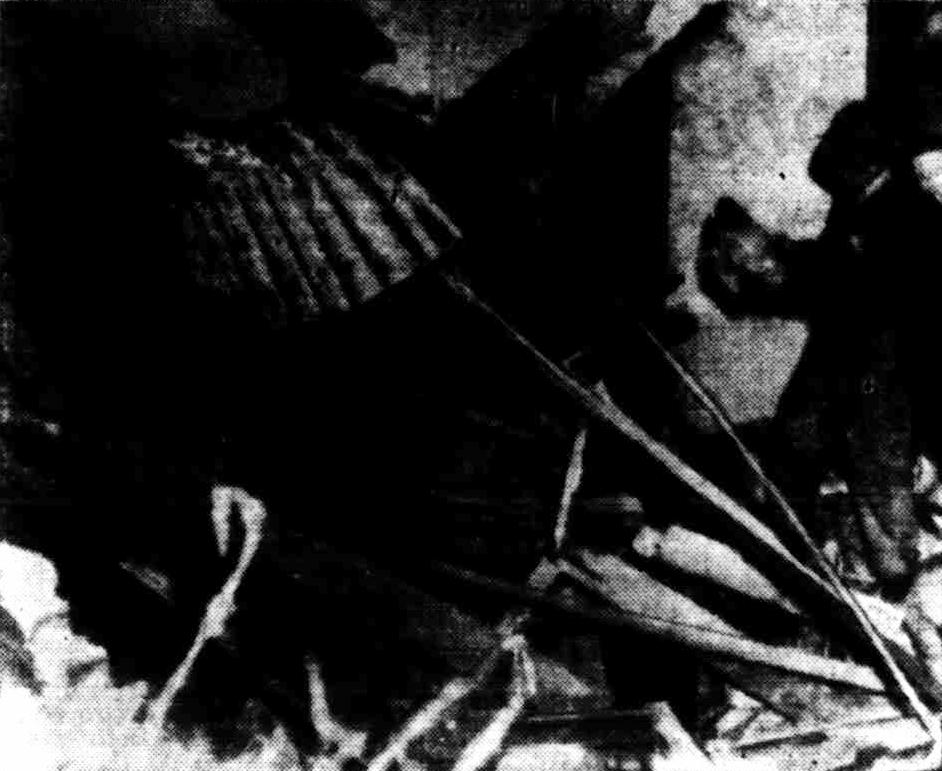
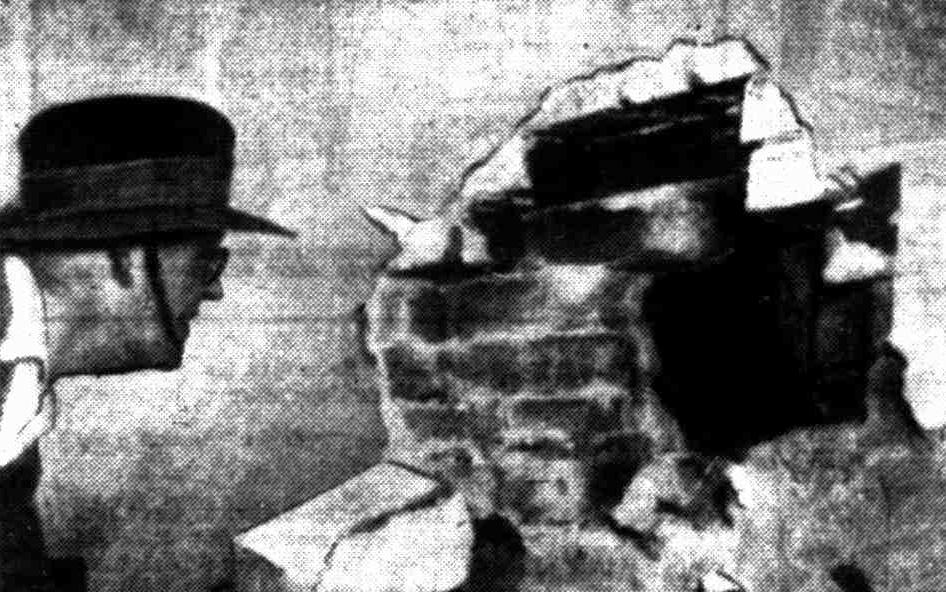
REFUGEE'S LEG BROKEN
The only casualty was Edward Hirsch, consulting engineer, who is in hospital with a broken leg. He was in bed at his flat in Manion Ave., Rose Bay, when a shell came through the roof. It knocked a hole in a brick partition wall, ripped up several feet of flooring, then ricochetted high up through another wall.
HERSCH, a German-Jew, was injured by flying bricks.
This ship arrived in an Australian port with a shell hole in the bow after fighting off an attack by a Japanese submarine off the south-east coast of Australia. The submarine is thought to be of the same type which is believed to have shelled Sydney on Sunday night. There were no serious casualties among the crew. SHIP SURVIVES ENEMY SUBMARINE ATTACK (1942, June 12). The Sydney Morning Herald (NSW : 1842 - 1954), p. 7. Retrieved from http://nla.gov.au/nla.news-article17799861
Two Killed Four Wounded
Attack off Coast
BULLETS SPRAYED DECK
"Don't fire! We are only a harmless fishing boat," yelled the skipper of a Sydney-owned trawler as a Japanese submarine began to shell the vessel off the east coast of Australia recently.
Vainly the fishermen sought cover by dodging to sheltered corners; two even dived overboard for safely. Shell after shell ripped into the superstructure and the submarine then circled three times, sweeping the deck with a hail of machine-gun fire.
When the attack was over two men lay sprawled on the deck, dead; four others were wounded, and the remaining six of the crew bewildered with shock. The trawler itself kept afloat and later was brought into a port.
SHOT DOWN IN DASH TO LIFEBOAT
The announcement of the shelling, made from General MacArthur's Headquarters yesterday, gave the first, indication since June 11 of the presence of a Japanese submarine in Australian waters. The submarine, a sea-going type 300 feet long, attacked the trawler, which was of 200 tons about 20 miles off the coast. The raider came to the surface about a mile from the trawler and opened fire with big guns.
A heavy sea was running and clouds constantly obscured the moon. The ship was trawling, and when the first shell came across the bows the crew thought a naval vessel had fired as a warning to put lights out.
STEAM PIPE HIT
The second shell hit the trawler and put the main steam pipe out of action. Then the superstructure, including the bridge, was quickly shot away.
As the first shells pounded in, the skipper of the trawler, Captain William Held, of Rozelle, Sydney, tried to warn the attackers by yelling that the vessel as only a harmless fishing boat, but, the only answer he got was the explosion of more shells.
It soon became apparent that the only chances of safety lay in getting clear of the ship. Twelve shells had already hit the vessel out of 17 to 20 fired, and there was a chance that in the intervals between more shells the lifeboat could be launched, but instead of shells a new terror now appeared.
The submarine, moving in from its distant range, opened fire with machine-guns. It circled the trawler three times at a distance of 100 yards, spraying the deck with bullets. The deadly hail struck the crew just as they made for the lifeboat. Archibald McPherson, a deck-hand, was running when a bullet struck, him down, dead. Arthur Scobie, the second mate was killed also.
SWAM ROUND SHIP
In this, new danger, attempts to launch the lifeboat were abandoned. All that the men could do was to dodge for shelter wherever they could. Suddenly the attack ceased. The sub-marine disappeared in a dive.
Frank Temple, a fireman, who was injured in the leg with a shell fragment, said that the first shell went over the bows. The next severed the steam pipe, and he leapt over the side for protection. But the submarine fired at them from all quarters, George Reid, chief engineer, told the same story. He said he swam round and round the ship and found it difficult to dodge the hail of machine-gun bullets and shells. William Miller, the cook, said he had been shelled by German sub-marines in the last war, but had never had such an experience as this, it was cowardly and typical of the Japanese.
None of the crew saw any Japanese in the glimpses they caught of the submarine.
CASUALTY LIST
The casualties on the trawler were:
KILLED
Archibald McPherson, deck hand, of the Frisco Hotel, Dowling Street, East Sydney.
Arthur Scobie, second mate, of Cardiff, Wales.
WOUNDED.
George Reid, chief engineer, of Mortdale.
Alexander Thomas Reid, brother of the captain, mate, of Mortdale, in a serious condition.
Frank Temple, fireman, Glebe.
I. W. Wilson, radio operator, of Amalgamated Wireless.
SUFFERING FROM SHOCK.
Captain William Reid, of 12 Byrnes Street, Rozelle.
Jack Reid, second engineer, of 40 Marlborough Street, Drummoyne.
William Bray, deck hand, resident of a Sydney hotel.
Theodore Anderson, fireman, on first trip, address unknown.
John Gunderson, fireman, 2 Ann Street, Surry Hills Sydney.
William Miller, cook, 358 Victoria Street, Darlinghurst.
FERRIED IN DINGHY
People from a fishing town on the coast gathered at the edge of the sea and watched the flash of the guns. As soon as the local police heard of the attack they asked several local residents to go out in their trawler. At the same time two policemen, accompanied by another local resident, put out in a 30ft launch. Because of the rough seas they were unable to get nearer than two miles from the attacked vessel.
In the meantime, however, the first rescuing craft had got close enough to the trawler to fix a line to it. Using the line, a dinghy plied to and fro until the two dead men and the survivors had been transferred to the rescuing vessel.
Later, the rescuing trawler hooked to the vessel which had been attacked, and held her until a tug arrived to take her away. When the wounded arrived at the fishing town, they were attended to by the local N.E.S. first-aid unit, and taken to hospital.
Close relatives of the dead and wounded were in the country town yesterday near the scene of the attack. They and members of the crew who could walk followed the funeral of the two men who had lost their lives.
"MURDER AND PIRACY"
"The Axis Powers have delighted in murder and piracy on the high seas," said the clergyman at the funeral service.
"Their practices, which have led to such a murder as this, warn us of the kind of thing which at any moment we here may have to face. The shells which laid our brothers low were not merely fired at them, but were aimed at trying to create panic among our people on the shore. But I am confident that that aim will not have any such result. Instead, I am sure that the people here will be stiffened in their determination to do all that is in their power to eradicate such evils from the earth."
The skipper, on behalf of the crew, has presented a letter to the N.E.S. organisation in the area, expressing gratitude for the splendid services rendered on the arrival of the crew.
The nationalities in the crew include Australian, Danish, English, American, Scottish, New Zealand, and Orkney Islands.
Previous attacks by submarines off the east coast of Australia have occurred as follows:
On June 2 it was announced that eight men were killed and ten injured when a midget submarine sank a naval depot vessel in Sydney Harbour.
On June 5 it was announced that one ship had been torpedoed and sunk, and two others attacked but had escaped damage, off the east coast.
On June 11 it was revealed that an Allied ship had fought off a submarine which shelled it off the south-east coast.
The crew of a Russian ship, on June 27, reported that a submarine had shelled and machine-gunned the ship off the east coast.
(Pictures on Next Page)
SURVIVORS OF SUBMARINE ATTACK ON TRAWLER
Above: The bridge of the trawler which was shelled by a Japanese submarine off the east coast of Australia. In the attack the bridge was shot away. Right: Four of the survivors, three of whom are related.
...TRAWLER SHELLED BY SUBMARINE (1942, August 5). The Sydney Morning Herald (NSW : 1842 - 1954), p. 7. Retrieved from http://nla.gov.au/nla.news-article17796063
SYDNEY, Wednesday: Relating a grim story as he sat at the bedside of his brother, Alexander Reid, one of the four seamen injured when a Japanese submarine attacked an unarmed trawler off the Australian east coast and killed two, Captain William Reid said that if they had only had a six-pounder he would have fought until he died. Captain Reid said that during the period he had been at sea he had seen some submarines, but the one that attacked them was the biggest of all. As he saw it approaching after surfacing within 200 yards he yelled out that they were only a fishing boat, then went to his room to remove his heavy clothes Through the portholes he kept watch on the enemy craft, which immediately commenced to shell.
The wireless operator, Wilson, who was interviewed in hospital today, said he first saw the sub-marine just aft. Just before a shell burst in the wireless room he had succeeded in sending out distress signals. When dodging around the deckhouse trying to avoid shells and bullets he was struck in the shoulder and stomach by pieces of shrapnel. Those who had seen the bodies of the victims stated that, embedded in their wounds were pieces of safety razor blades which the Japanese had included in their shrapnel. Japanese Submarine Was Large (1942, August 6). Tweed Daily (Murwillumbah, NSW : 1914 - 1949), p. 1. Retrieved from http://nla.gov.au/nla.news-article192943363
Freighter Hit off Coast
Five of the crew were killed and nine injured when a Japanese submarine attacked and damaged an Australian freighter off the coast of New South Wales a couple of months ago. The announcement of the attack was authorised officially yesterday.
The bodies of the seamen who were killed were still buried under the wreckage on the vessel's deck when she berthed 24 hours after the attack with her stern shattered. Two badly injured men were on deck, lying on improvised bunks and sheltered by tough tarpaulin tents. They were too dangerously injured to be moved below.
The vessel was attacked soon after 5 a.m. in darkness and a heavy mist. Two torpedoes were fired. The first struck the stern, blasting away the rudder. Parts of the propeller were blown through the ship on to the aft deck near the-crew's quarters where 22 men were asleep. The second torpedo missed. The crew's quarters were wrecked by the explosion, and by heavy Iron spars, which were dislodged by the torpedo.
KILLED BY BLAST
Two of the five men killed are believed to have died from the effects of the blast from the explosion. One was enveloped in a sheet of steel, which had been wrapped round him by the force of the blast. An oxyacetylene torch had to be used to extricate his body.
Those killed were:
John B. Bromilow, A.B., of Douglas Street, Newport, Victoria.
Ernest Noble, A.B., of Soundwell Street, Largs, South Australia.
Arthur Sundeil, ‘Greenan,' Crown Street, Sydney.
Alfred Smith, of Miller's Point, Sydney: and
Henry G. Talbot. Quebec Street, Port; Adelaide, South Australia.
Those injured were:
Donald Mccauley. 30, Napier Street, Sydney; lacerated forehead and shock:
CAME TO SURFACE
Immediately after the explosion the crew saw the submarine surface and fire another torpedo, which passed under the stern of the ship.
The submarine then approached the freighter, and a Japanese officer shouted an order in English for the crew to abandon ship.
"We were amazed at the size of the submarine," said one seaman. "She was so close that we could easily have thrown a stone on her deck."
After the Japanese officer had ordered the crew to abandon ship the submarine fired a shell over the freighter.
"It went well over us and I think it was meant to hurry us up." a member of the crew said.
'The freighter was at the mercy of the attacker, and the master, after conferring- with his officers, ordered the men into the ship's boats.
The injured men who could be reached were helped into the boats.
When the boats had moved clear of the freighter, which the crew expected would be shelled, the submarine disappeared.
"We cannot understand why they did not finish off the ship," said Master Pemberton.
"The Japs came and had a good look, and evidently decided that we were doomed, and further shelling would be unnecessary."
RAOIO REPAIRED
When the ship showed no sign of sinking, Captain McLellan called for volunteers to go aboard with him. The chief officer, the wireless operator, the boatswain, and the carpenter were selected. They repaired the wireless aerial, which had been wrecked, and seat out distress signals. During the attack about 40 distress signals were sent out before it was known that the aerial was useless.
Soon after two vessels arrived, and the rest of the ship's crew returned to the freighter. She drifted helplessly for hours with the pumps working; until tugs arrived and took her in tow. She was loaded heavily and was becoming dangerously low at the stern. The freighter, in tow of the tugs, reached a port next day.
While the freighter stood off-shore vessels took a doctor and ambulance men out to attend to the Injured Working by the light of torches they gave first aid to the injured. In the early mowing the stricken vessel was brought into port by tugs, three towing and one pushing astern.
FLAG AT HALF-MAST
Four ambulance waggons were waiting at the wharf to receive the injured as the ship berthed she and her flag lowered to half-mast to honour the dead
It was not until some hours later that the work of clearing the heavy wreckage from the bodies of the victims was completed.
Every member of the crew praised the cool seamanship of the master whose brother was master of another freighter which was sunk recently. He is still missing.
The crew described Frank Grant 16 the deck boy as a "blooming little hero Grant was one of those blown out of his bunk when the torpedo struck
"He behaved bravely all through and dragged one wounded men from the shattered bunk-house" one sea-man said. SUBMARINE ATTACK. (1942, September 5). The Sydney Morning Herald (NSW : 1842 - 1954), p. 9. Retrieved from http://nla.gov.au/nla.news-article17830397
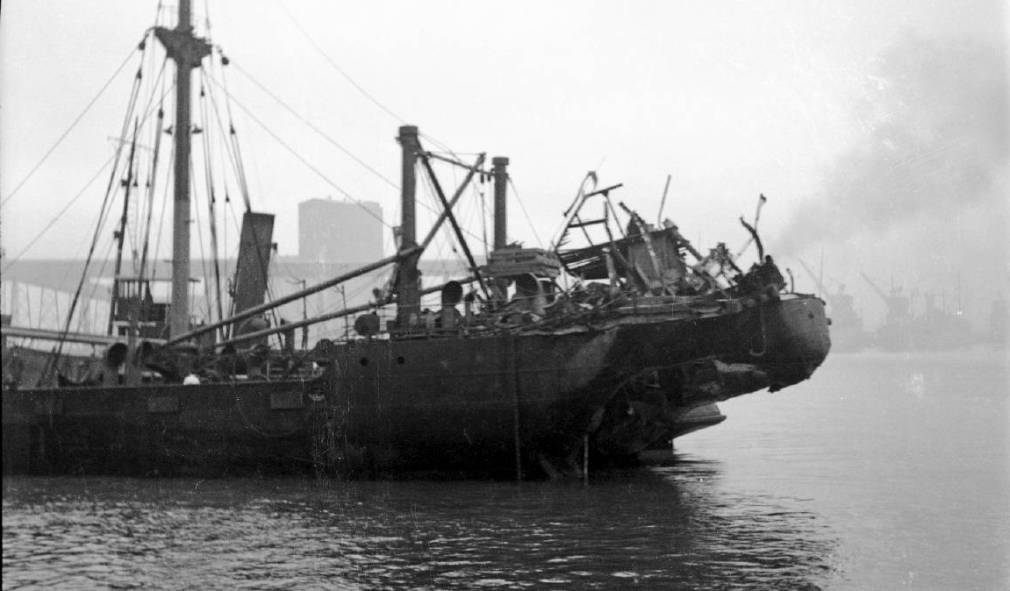
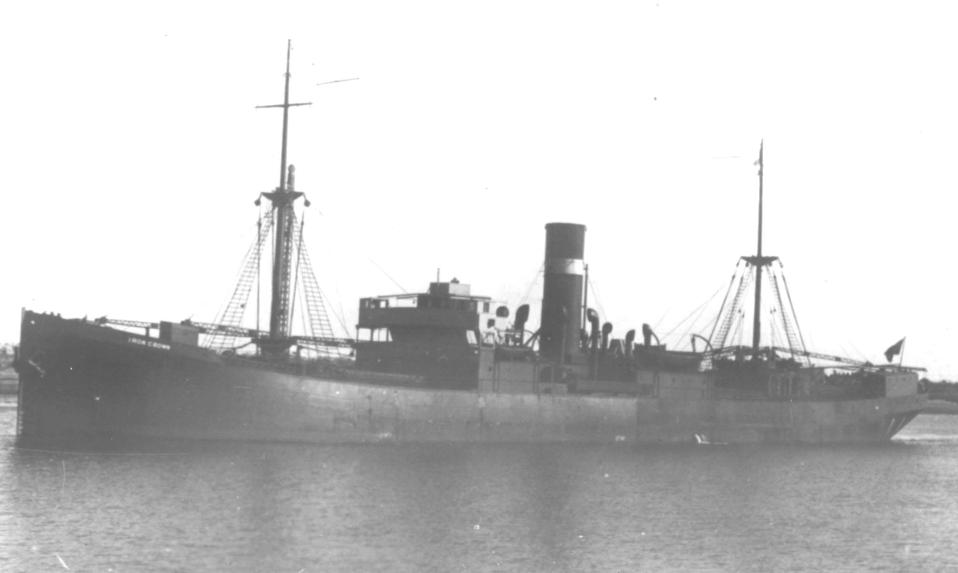
SS Iron Crown (Supplied South Australian Maritime Museum)
Iron Crown was built at Williamstown Dockyard as part of the Commonwealth line of steamers for the Australian Commonwealth Shipping Board. She was launched on 27 January 1922 as Euroa, before being renamed Iron Crown in December 1923 and homeported in Sydney under the British Flag.
On 4 June 1942, Iron Crown, while en route from Whyalla in South Australia to Newcastle in New South Wales, was torpedoed and sunk 44 miles SSW of Gabo Island by I-27. Out of her 43 crew members whom she was carrying, 38 were killed, with the survivors being picked up by SS Mulbera.
Tasmanian George Fisher, the last survivor, who was aged 18 when the ship sank, died in 2012.
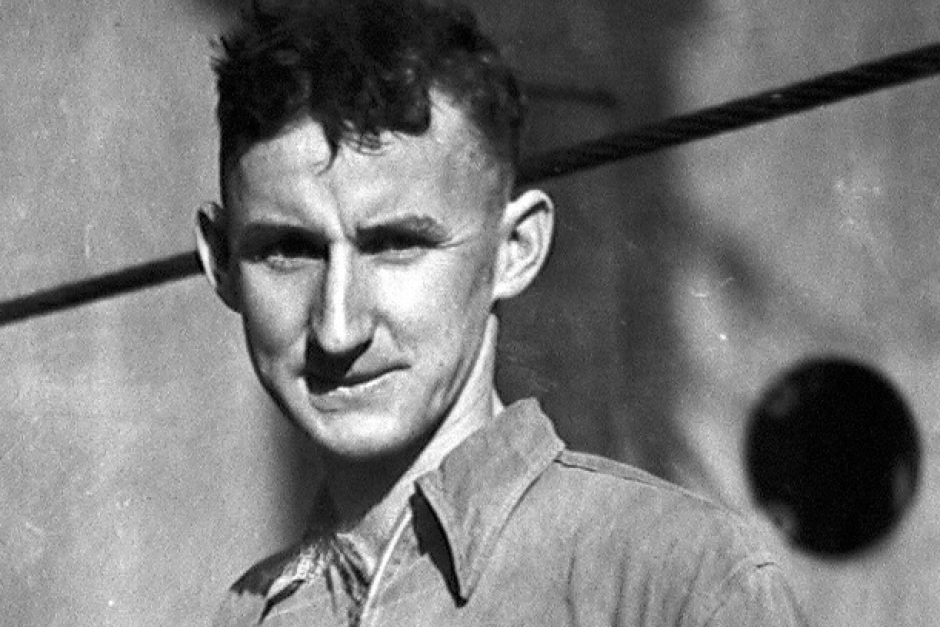
George Fisher was a deck boy on the SS Iron Crown when he was 18. Supplied: Australians at War Film Archive, UNSW Canberra
In an interview with the Australians at War Film Archive in 2003, Mr Fisher was asked whether the sinking of the Iron Crown haunted him.
"No, not really," he said. "At times I get sort of upset when I sort of think of it.
"That's a very sad part of my life, perhaps. One of the saddest."
His partner Lorraine Silvester said she was emotional when she heard about the discovery.
"George was so passionate about having his shipmates remembered," she said. "It's a pity it wasn't found before he died."
Ms Silvester said Mr Fisher had been coming up from below deck when he heard a terrible explosion.
"He grabbed the life jacket and he was calling to all the others to get out, get out," she said.
"They knew the ship was going down. He jumped overboard, and it was the life jacket that saved him."
Mr Fisher kept in touch with the other survivors, including his close friend Bruce Miels from Adelaide. Before Mr Fisher died, he organised a plaque to be placed near the cenotaph in Mallacoota in Victoria to honour his shipmates.
His experience appeared among the June 1942 reports of ships being attacked off our coasts lisst those men lost and shows, by where they were known to reside, that the merchant marine service during WWII brought together men from all over Australia and the world - on one ship :
SURVIVORS' STORIES OF COASTAL SINKING
SECOND SHIP HIT BY JAP. TORPEDO
ONLY five members of the crew of 43 escaped when a torpedo split in halves a small cargo ship off the New South Wales coast late on Thursday afternoon. The ship — the second to be torpedoed off the coast in a few days — sank in 30 seconds. Many of the crew are known to have been trapped in the forecastle as they listened to the radio; others were drawn down into the sea with the vessel as they tried to launch a lifeboat.
THE five survivors, who jumped overboard a split second after the torpedo had hit the ship, were picked up after clinging for three hours to wreckage. The survivors are: Fourth Engineer Bruce Miels (21), of Keswick, Adelaide. Able Seaman A. A. Sabiston (57), of Newcastle. James Roach (34), married, of Wickham; greaser. N. McKelvie (29), Port Adelaide, married; trimmer. George Fisher (18), of Smithton, Tasmania; deck boy.
The men told dramatic stories of their escape from the doomed ship. 'She went down before you could say Jack Robinson,' '' said Able Seaman Sabiston. 'About 20 of the crew were in the forecastle listening to the wireless. The poor devils didn't have a chance. 'I dived straight into the sea. I'd been in the water about 10 minutes when my four mates appeared. 'As night came on things looked bad. We began to get worried. Then a ship appeared. We shouted with joy.' Roach said he was in the galley making tea when the torpedo struck the vessel. 'I raced to the deck and dived straight overboard. I grabbed a piece of wood and hung on to it. Later I joined the boys on what was left of the cabin roof. But I must have hit a piece of wood as I dived, because I think my left shoulder is dislocated.' N. McKelvie. who was below when the torpedo hit, grabbed his pants, ran to the deck and, diving overboard, swam frantically for about 200 yards. 'It was touch and go,' he said.
'I could feel the suction pulling me down. I thought I was a gonner.' 'It's a miracle that any of us ever got out of it,' said Fourth Engineer Bruce Miels. 'I was in my cabin when the explosion came. I ran up on deck. I saw men trying to launch the lifeboat. I shouted out that we were sinking fast. Then I jumped into the sea.'
Missing members of the ship's crew are: — A. McLELLAN, master, 12 Alleyne Street, Chatswood; B. W. BOKENHAM, first mate, Balmoral Street, Waitara; K. KANERVA, second mate. Sale Street, Auckland; J. SUTHERLAND, third mate, Newcastle; H, H. GILES, chief engineer, Newcastle; R. A. COSTA, second engineer, New castle; P. FERGUSON, third engineer, 20 Percival Road, Stanmore; A. JOBSEN, wireless operator. Clark Hill Road, Kew, Victoria; J. W. HAY, sea man gunner, Davey Street. Hobart; A. QUINN, carpenter, Drake Street. Largs Bay, South Australia; P. MacGREGOR, bosun, no relatives: C. SANDISON, A.B., Shetland. Scotland; A. ANDERSON, A.B., no relatives: J. DAVIES, A.B., Liverpool, England; J. SMITHIES, A.B., 88 Queen Street, Woollahra; R. BENNETT, A.B.. New castle; M. TRACEY, A.B., Newcastle: R. ORMISTON, A.B., 29 Lilydale Street, Marrickville; W. RUSHFORD, ordinary seaman, Newcastle. V. MACDONALD, donkeyman. Newcastle; S. BARTLETT, greaser. 16 Constitution Road, Dulwich Hill: J. DARRAGH, fireman, Yorkshire. England; J. JAMES, fireman, Newcastle; F. STEWART, fireman. Newcastle: E. CONWAY, fireman, Newcastle; J. SMITH, fireman, Bucknell Road. Glenville, South Australia; R. TAYLOR, fireman, Newcastle; J. HAND, fireman, Liverpool. England; J. Mac CARRON, fireman, 26 Anzac Parade. Kensington; F. CHAMMINHS, fire man, Newcastle; KARAVAS, trimmer. Newcastle; E. GRIFFITHS, trimmer, Newcastle; G. INNELL, chief steward. Rainbow Street, Coogee; J. POULTON, assistant steward, Townsend Street, Lakehurst; T. SCOTT, assistant steward, 31 Hendy Street, Coogee; M. MILLER, chief cook, Glasgow. Scotland; D. BURNS, second cook. Fifth Avenue, Fremantle; S. TAlLOR, assistant cook, Liverpool, England.
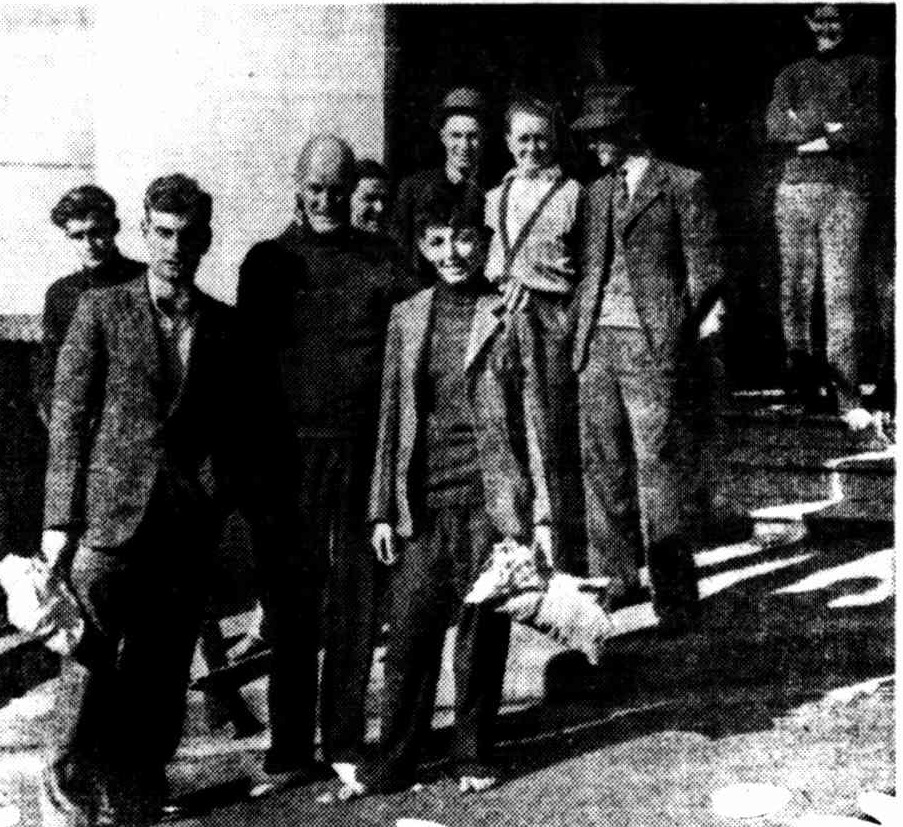
SURVIVORS OF A SHIP torpedoed in Eastern Australian waters leaving a hostel after having been fitted out with new clothing. In the foreground is 15-year-old deck boy Harry Hawkins, with carpenter J. Halliday's arm around him. Halliday saved the lad's life by dragging him into a lifeboat as the ship sank.
SURVIVORS' STORIES OF COASTAL SINKING (1942, June 7 - Sunday). Truth (Sydney, NSW : 1894 - 1954), p. 18. Retrieved from http://nla.gov.au/nla.news-article168969981
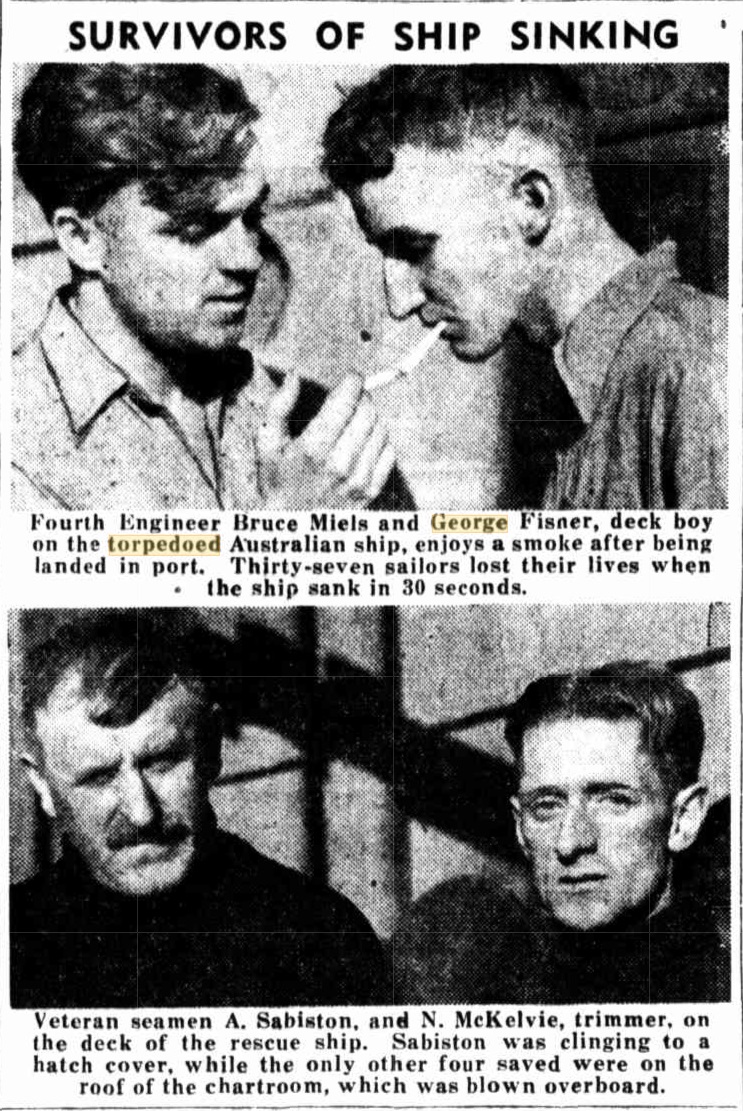
SURVIVORS OF SHIP SINKING (1942, June 6). The Sun (Sydney, NSW : 1910 - 1954), p. 2 (FOOT BALL LAST RACE). Retrieved from http://nla.gov.au/nla.news-article231783058
.jpg?timestamp=1556095113168)
Smithton Youth's Rescue From Torpedoed Ship (1942, August 26). Advocate (Burnie, Tas. : 1890 - 1954), p. 4. Retrieved from http://nla.gov.au/nla.news-article68777918